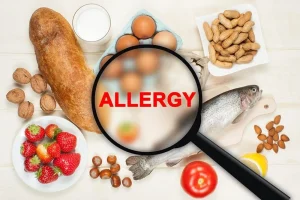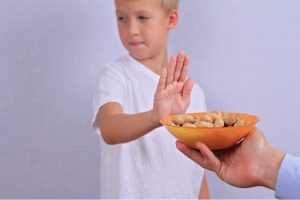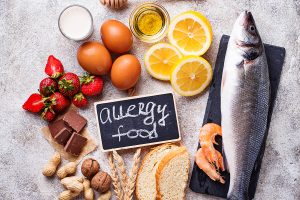The management of food allergies for children is a more difficult task than, say, solving a Rubik’s cube for the great majority of parents. It is not only willing to abandon any food practices that encourage food allergies in the fixing of their child. As the number of kids who are being diagnosed with food allergies continues to rise, it becomes important to know ways to offer security and promote normalcy.
As far as the unfolding events are concerned, you will be offered appropriate childcare methods that can be used for the benefit of the adult too. This includes but is not limited to identifying food allergens, meal preparation, and response to social interactions involving food. Get ready for a great adventure in the management of food allergies so that your little angel does not feel the limits!
The Importance of Food Allergies to Kids:
Food allergies: The American Academy of Allergy, Asthma and Immunology defines it as immune-mediated adverse food reactions. Food allergies have developed, earning the body’s immune system to target certain food items as enemies. The immune system thus reacts negatively to that particular substance. And so education on the parent’s side as to the reactions which might occur is vital. At a young age, though, particularly early childhood, it is common for children to have their first allergic reaction. The most damaging are the ones that take place among infants and toddlers and can be several particular allergens. For less serious reactions, early assessment and diagnosis allow reducing the chances of bad outcomes.
Genetic predispositions may also be involved; for instance, if there are lots of allergies in the family, then the child in question also runs the risk of becoming allergic. Nonetheless, not every child with any allergic relatives will necessarily develop food allergens. Recognising the signs of an allergy is crucial. Take note of any intrusion to health and any new developments related to the consumption of fresh foods—there may be more that require medical attention.
Eating Disorders in Children: Risk Factors, Diagnoses and Treatment
In most cases of food allergies in children, there is a specific number of common allergens. Therefore, you need to know these allergens to protect your children.
The most common allergens are milk, eggs, peanut butter, tree nuts, soy, wheat, fish, and shellfish. Every one of them may result in allergic symptoms that may range from a mild skin rash to an extreme respiratory disease—anaphylaxis.
As mentioned before, the first step to avoid such allergens is to be watchful of the food that is labeled. These ingredients are often encoded in jargon or within processed foods. Even when you are sure that you have seen the item before, be sure to check the label.
There is also a risk of cross-contamination. One crumb of peanut butter can have a huge impact on a child who has a peanut clinically moderated allergy. Hence, even if the mothers and members of the surrounding family share cooking responsibilities, they need to be trained on appropriate food cleaning practices.
Note any adverse reactions of the body after consuming a certain type of food. Note that skin rashes, stomach pains, or even difficulty in breathing can be a major cause of allergy.’
Safety Precautions in Caring for Kids with Food Allergies:
The safety of children with food allergies is sustained principally at the house. Specify to them the type of allergens they need to stay away from inside your home. Short and precise details are essential. Set up “allergy-free” and “allergy area” signs within common areas such as the kitchen and dining room. Storing all the allergen-free products on different shelves or in other cabinets and labeling them can help reduce this confusion.
If you are inviting visitors over for a party, let everyone know in advance about the allergies of your children. Ask them to prepare food that is healthy and safe for all children, especially for yours. Items in the pantry that may contain allergens should be scrutinized by reading the labels. Assorted products may have strange ingredients or even the risk of cross-contamination with allergens, so care is always needed. Help your child learn to stay away from some foods at an early age. This will enable the child to be alert and bright in whatever social aspects they will be as they grow.
Planning Your Meals for Young Ones with Allergies to Foods:
It is easy to see why meal planning is important for children who have food allergies. It ensures that safe options are always at hand and eliminates the risk of making hasty choices that would result in exposure. Let us begin with the preparation of a one-week meal plan. Let your child help in picking the meals and this will encourage them to indulge in the task of meal planning. This not only gives them control over their lives but also equips them with their diet.
Label reading is an important activity. Ingredient wording should always be compared to what the item is characterized as, especially when it comes to known items, because the composition may alter for any number of reasons. Such allergens can be hidden under other terms, so take care while reading any food items. It might be helpful to do some pre-cooking or more frequent snacking. It will be stress-free on hectic days because allergen-free foods will be available.
There are also important matters about programmes like this—cross-contamination! Store allergy-safe foods away from all other foods during storage and preparing meals. A little effort, in the form of basic practices, goes a long way in ensuring safety in the home environment and comfort when eating out.
How to Properly Eat Out When You Have a Child with Food Allergies?
It can be a nightmare going out for meals with your child, especially if he or she is prone to food allergies. Begin with scanning for restaurants not far away from you, or even further. Try to focus on those with the allergy-free tab. Upon reaching out, do not shy away from explaining the requirements in detail in the presence of other cultures. Read about how they get their food or how the food is prepared. They have to know where the line is as far as food allergies are concerned.
Some people might choose to go during the off-peak hours; this also makes it easier to get help from the waiters and it cuts down stress in case changes are to be made. It is not abnormal to bring along food for yourself when the meals included in the options are not appealing enough for your liking. In that situation, your child is guaranteed no one who gasps only because they finish their food and not the child’s. Most importantly, combine all you need in a separate bag or load everything in a single one so if you see the consequences, proceed to change or go do something else.
Social Settings and School Events Management:
It can be more difficult for children with food allergies to face social settings but they should be practiced. Focus the discussion about allergies on the child and engage the child to voice denial as necessary. Pretending to be a particular character when being in situations like this one will give you self-confidence.
When you are invited to a birthday party or you go to a school function, you should always contact the host before the event. Plan on the safer foods and discuss with the host what else needs to be there. This will not only protect your child but will also educate others.
Herd them into friendships by having some of their classmates over and playing with them at your place where you have more power regarding their safety. Offer some snacks, which they will not risk rejecting.
In a school setting, work with the teachers and other non-teaching staff for your child’s meals. Create a well-structured approach for the provision of meals or snacks within all the activities, for example, field trips, celebrations minutiae, etc., so that nobody is left behind in participation whilst exercising safety.
Help their friends develop respect for food allergies by helping them with information about food allergies. The more they know, the easier it will be for everyone related to them.
Conclusion:
It is easy to feel stressed about the process of implementing management strategies for dealing with food allergies in younger children. But knowing what to do and how to do it to take out the risk is adequate for your child’s safety. Have a wealth of information concerning the allergens around and teach your child effective ways of spotting some. The best thing that you can do here is empower them. Everything revolves around meal preparations; it assists you in determining all that will go into their meals. Pay attention to all instructions on useful materials; this will avoid negligence. Food is not the only thing that is eaten up by these dairy dinners. The process of going out to eat has its steps. It is less dangerous to go to restaurants that cater to people with food allergies.
Social situations can be challenging at times too. Make sure that there are open lines of communication with carers and teachers regarding the needs of the child. Safety measures such as these should be incorporated to instill the same level of trust in you and your child as you help him or her deal with food allergies. Always keep in mind that even the littlest contribution goes a long way in ensuring the safety of your child whenever there is a risk that may present itself.
FAQs:
1. Which type of food allergy is the most frequent in children?
Some of the most common allergens include milk, eggs, peanuts, tree nuts, wheat, soy, fish, and shellfish. Understanding these factors will assist you in avoiding the hazards.
2. How do I know if my child is allergic to some substance?
You should observe for such symptoms as hives, swelling of the lips or face, breathing problems, and abdominal pains that may come after the consumption of certain foods. You would need to see an allergist for testing and a proper diagnosis.
3. Can children get rid of their food allergies?
Definitely Yes! Some children are likely to outgrow milk and egg allergies by the age of five years. Other people, however, might be allergic throughout their lives. Regular visits back to your allergist are important.
4. What actions do I take when my child is observed to be having a severe allergic reaction?
An epinephrine auto-injector should be immediately administered if a child has apparent symptoms of a severe reaction (this is called anaphylaxis) and proceed to call emergency services.
5. Can kids with allergies find healthy snack options that are free of allergens?
Definitely! The demand for allergy-free foods is very good, which leads to the production of delicious and safe snacks. But it is important to confirm that the package is indeed safe.




